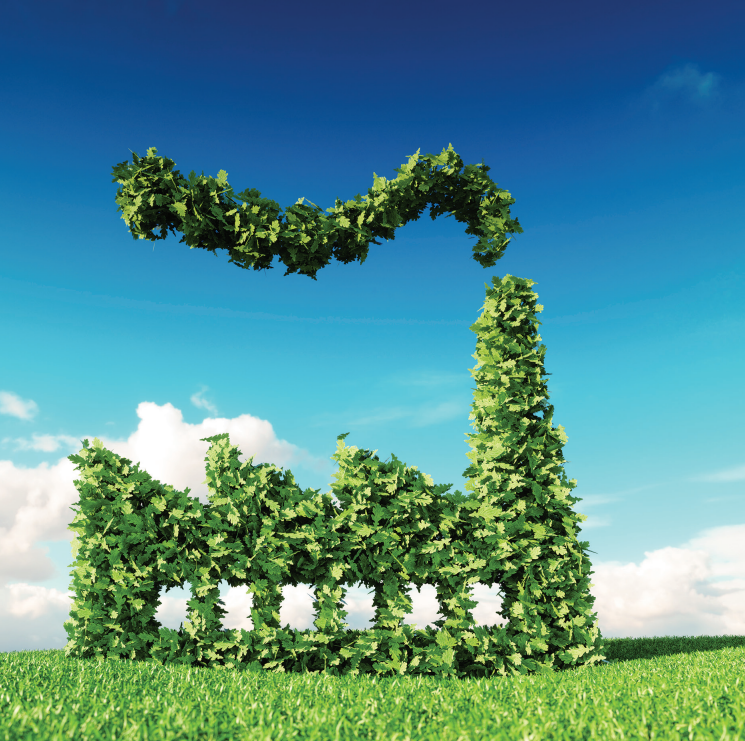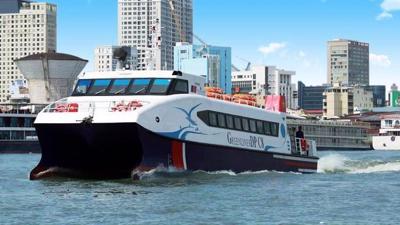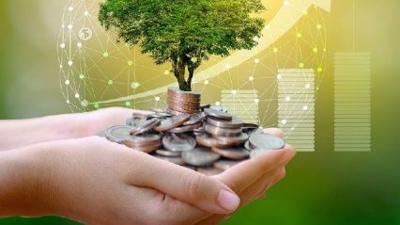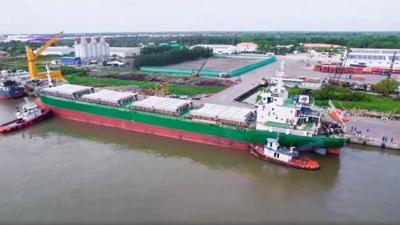Connecting for sustainability
The ASEAN region is considered to hold a host of positive growth prospects, according to Deloitte.

There can be no doubt that ASEAN, as a region, is very much on the world’s radar.
Viewed from a political standpoint, the region is center stage, hosting major global events such as the upcoming G20 summit in Indonesia and visits by government delegates from around the world. On the innovation front, we are seeing more and more unicorn startups being born in the region, especially in the areas of foodtech and fintech.
The message to the world is clear - the spotlight is on ASEAN.
Over the past decade, ASEAN’s economy has developed rapidly, largely due to its unique geographical location and favorable business environment. In fact, ASEAN is currently home to four of the world’s fastest growing economies - Cambodia, Indonesia, Singapore, and Vietnam.
As a single market, ASEAN is currently the fifth-largest economy, valued at $3.2 trillion, after the US, China, Japan, and Germany. Furthermore, the region is on track to becoming the fourth-largest economy by 2030, eclipsing Japan.
While ASEAN took a hit during the Covid-19 pandemic, it appears that the blow was not as bruising as in other regions of the world. Vietnam, for example, was one of very few countries worldwide to have recorded positive economic results in 2020. As a whole, ASEAN countries managed to navigate the challenges with resilience and are bouncing back in a steady recovery.
The outlook moving forward shows great promise for ASEAN. The region is expected to keep up its high GDP growth momentum and should be on course to overtake the bigger economies of China and the US in terms of growth rates. It has been projected that ASEAN’s growth will continue to 2030 averaging 5.3 per cent annually, which is above the global norm.
ASEAN fertile ground for trade and investment
Economic cooperation and integration are perhaps the most crucial pillars underpinning the region’s success and cohesion. ASEAN’s economic prospects rely on a set of significant and well-curated free trade agreements (FTAs) and it appears that every economy wants a partnership.
The Regional Comprehensive Economic Partnership (RCEP) agreement was signed in Hanoi in November 2020. This is the world’s largest FTA, linking ASEAN with China, South Korea, Japan, Australia, and New Zealand - countries with a combined population of 2.3 billion and accounting for 30 per cent of global GDP and 28 per cent of global trade. The RCEP is expected to greatly benefit ASEAN countries, potentially by up to $19 billion per year by 2030.
Where investments are concerned, due in part to its strategic geographical location, ease of doing business, tax incentives, and FTAs, ASEAN is currently one of the most attractive investment destinations for investors seeking to expand their global footprint.
The region’s FDI growth has been driven by strong investment, mainly in Singapore, Indonesia, and Vietnam, with these three countries receiving more than 80 per cent of inflows in 2019. In the same year, ASEAN recorded the largest FDI inflows of any emerging market. Though affected by Covid-19, by 2021, FDI into ASEAN had returned to pre-pandemic levels, at $175 billion. Looking ahead, Vietnam plans to attract investment from half of Fortune 500 companies by 2030.
This trajectory is set to continue throughout the region, with the main goal of the ASEAN Community Vision 2025 being to further strengthen the capacity of member states to attract FDI in strategic industries.
Four megatrends driving growth and investment
Apart from the open financial landscape, what else is driving growth and investment into ASEAN?
Firstly, geopolitical shifts. The combination of rising labor costs, supply chain concerns, and geopolitical tensions are driving multinational companies to relocate a growing proportion of their manufacturing from China to ASEAN in order to assert supply chain resilience.
Vietnam is the top choice in this exercise, contributing to its annual 6-7 per cent economic growth over the past decade as companies consider factors such as overall labor costs, political stability, and social and cultural conditions. A significant example is Apple relocating some of its AirPods production line from China to Vietnam in 2020, making the country one of the biggest beneficiaries of the “China+1” strategy of diversifying supply chains.
The second megatrend relates to digital advances. The extraordinary rates of digital expansion and digital ubiquity in ASEAN are helping to propel investment into the region. Fun fact - ASEAN is the world’s fastest growing online market with online transactions expected to double to $73 billion by 2023 and the overall digital economy projected to hit $1 trillion by 2030.
Third is ASEAN’s changing demographics. Going hand-in-hand with digital advances is an emerging middle class that embraces the online world and takes advantage of the greater opportunities that come with it. ASEAN’s middle class is projected to grow to 67 per cent of the region’s total population by 2030 and the implications are significant - consumption is set to double by 2030, with high growth in sectors such as F&B, electronics, education and transport. ASEAN is also home to a growing educated and young workforce; 60 per cent of its population are under 35 years old.
The last megatrend is ASEAN’s ESG (Environment, Social and Governance) commitment and capabilities.
Emerging priorities to guide sustainable investment
Traditional investments used to be siloed into sectors such as energy, manufacturing, and healthcare, each having their own strategic path but lacking a cohesive and unified long-term strategy. Today, in the post-Covid-19 world, emerging priorities have been brought to the forefront, with the most significant being the Green Agenda, declaring that environmentally-sustainable development is no longer on the fringe. It is the core.
Examples of market forces driving sustainable investments include:
Government regulations. Over the past three decades, there has been a ten-fold rise in the number of climate change laws and policies passed globally. There is a rush to comply and adapt, and there are expectations that more regulations will be designed to accelerate the transition to a low-carbon economy.
Investor expectations. Over 500 investors globally, who collectively manage more than $47 trillion in assets, have signed the Climate Action 100+ initiative that aims to ensure that large corporate greenhouse gas emitters take action.
Consumer demands. Research has shown that more than 80 per cent of consumers expect CEOs of consumer brands to be making more progress in reducing carbon emissions and single-use plastics.
Employee expectations. Seventy-eight per cent of executives in a 2020 Deloitte survey indicated that their employees were very concerned about climate change. In another Deloitte survey, 45 per cent of millennial employees said they would look to change jobs if their company did not implement sustainable business measures.
The reality is, if “business as usual” is continued as it is now, it will not lead to business as usual in the future. At Deloitte, we have posited that in Southeast Asia, and the larger Asia-Pacific, there is a clear opportunity for the countries to lead the way and show how acting on climate change is not a narrative of cost but one of extraordinary opportunity and economic growth. Southeast Asia, as a region, is sitting on $12.5 trillion opportunity that could materialize if action is taken now to invest in sustainable development.
Unlocking value with sustainable investments
There are already demonstrations of the value of ESG investments. Globally, assets under management in ESG-geared funds crossed the $1 trillion threshold in 2020, and over the past five years, ESG stocks outperformed the market by 88 per cent. Big names are changing their entire business models to adapt.
Moving forward, given that market forces are prompting investors to reassign billions of dollars using an ESG lens, it can be expected that every deal will be scrutinized on ESG parameters. Private equity investors and businesses will need to embed ESG not only in those geared to that end but across all transactions if they are to curtail risks and deliver more value.
Within the merger and acquisition (M&A) space for example, this means basing strategy, target identification, due diligence, valuation, integration, and value capture on material ESG components. For the foreseeable future, ESG-assessed M&As will be an important means to create growth, giving a competitive edge and access to affordable capital.
ESG should now be regarded as a key lever of value, including establishing stakeholder trust, which is a determining factor in a company’s feasibility to survive and thrive.
Where is ASEAN in this narrative? One can say that ASEAN is poised for success, given that its top sectors are receiving ESG investments. Increased levels of ESG investment are expected across the region, for example energy in Vietnam, manufacturing in Indonesia, Thailand, and Vietnam, and mobility in Malaysia, Singapore, and Thailand.
All in all, ASEAN, acting now, can generate a cycle of positive outcomes. Sustainable financing will support improvements to existing infrastructure; which in turn unlocks new sustainable assets, which in turn furthers transition into a low carbon economy, which in turn increases investor trust in sustainable investments, which in turn enhances attractiveness to investors, which in turn allows sustainable infrastructure to gain access to more funding, and the cycle continues.
How can leaders drive change?
First, the not-so-good news. Leaders struggle with short-term obstacles that impede future impact. The top five of these obstacles are difficulty measuring environmental impact, insufficient supply of sustainable or low-emissions input, high cost, a focus on near-term business issues/demands from investors/shareholders, and the magnitude of change needed being too large.
The real question here is: are these real obstacles or just low priorities?
There are disconnects between ambition and the actions companies are taking to help the planet, and at present the top actions taken by companies are low-hanging operational ones, such as using sustainable materials, increasing the efficiency of energy use, using energy efficient equipment, training employees on climate change actions, and reducing air travel.
This goes to show that companies are still less likely to implement actions that demonstrate that they have truly embedded climate considerations into their culture to effect meaningful transformation.
The harder-to-implement, needle-moving actions include developing sustainable products, requiring suppliers and partners to adhere to sustainability criteria, updating facilities, and tying senior leaders’ compensation to ESG performance.
Each organization, industry, and region needs to customize their own sustainability strategy, and these actions are important markers of leadership as they require a mindset that sees both risks of inaction and opportunity in sustainability.
Connecting for sustainability
ASEAN is poised for sustainable success. Its investment and economic outlooks are strong. But for this success to happen, priorities need to be aligned for sustainable development.
Businesses in the region now need to go full throttle to invest in needle-moving actions to create climate-leading societies that are resilient and ready to outperform and thrive.
For investors, the advice is to come in early, with now being the best time to seize opportunities before it gets more competitive, and to stay for the long run, as sustainability is not going anywhere - it is our present and our future.







